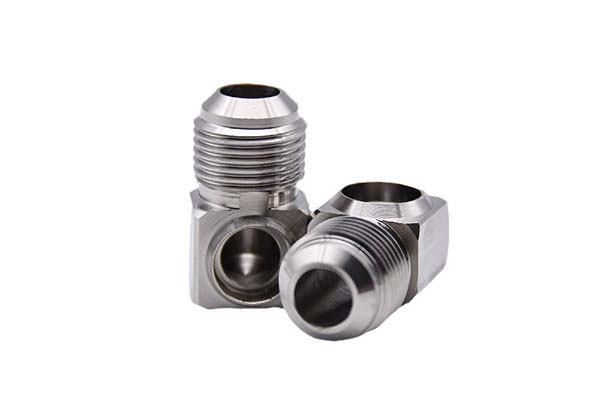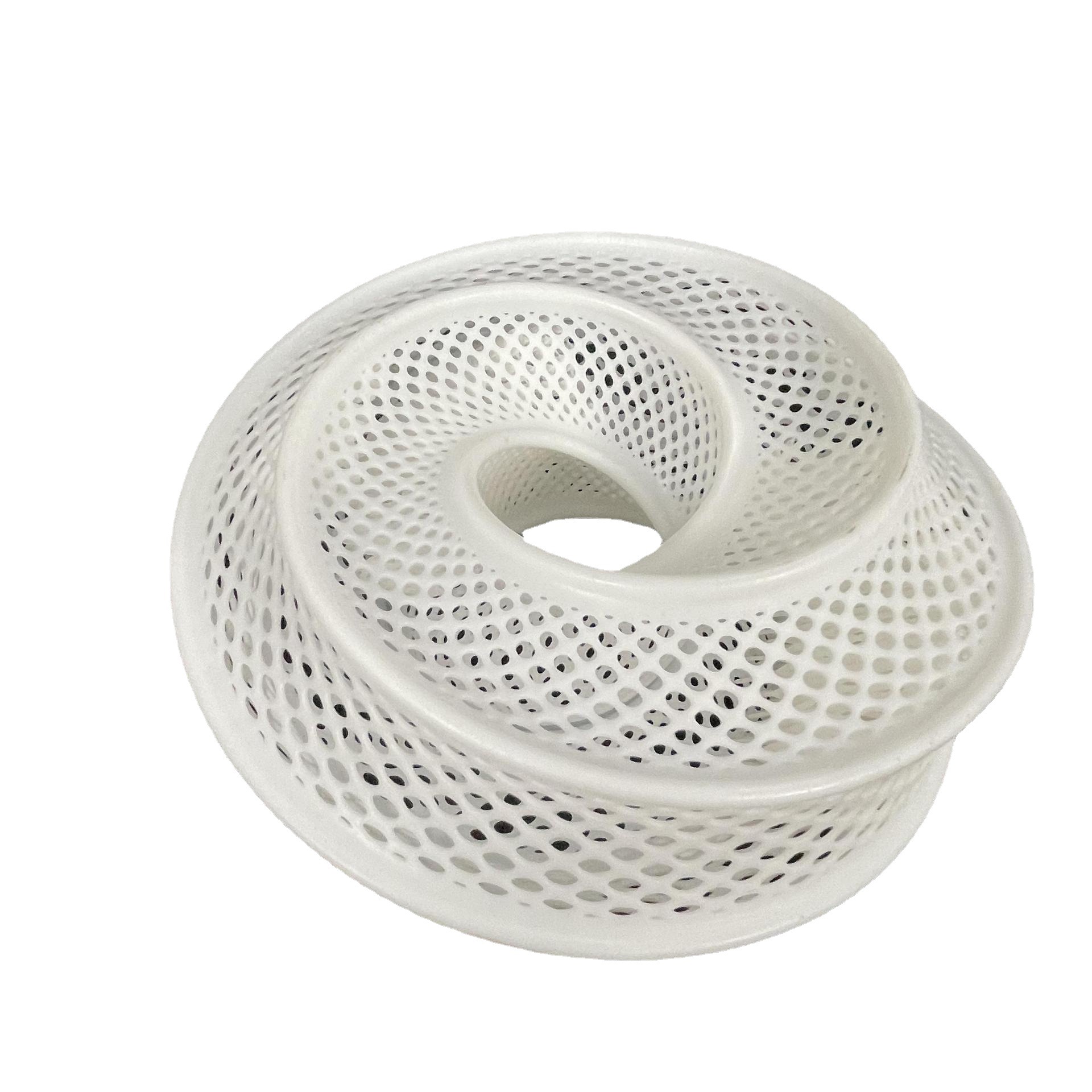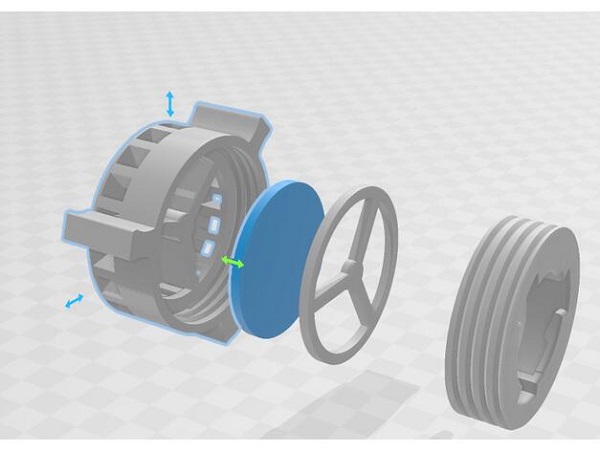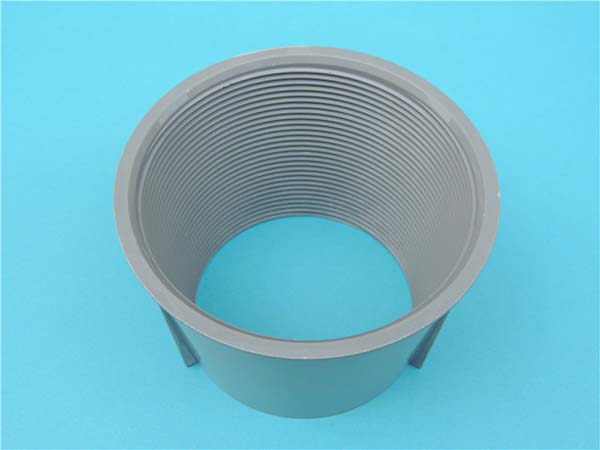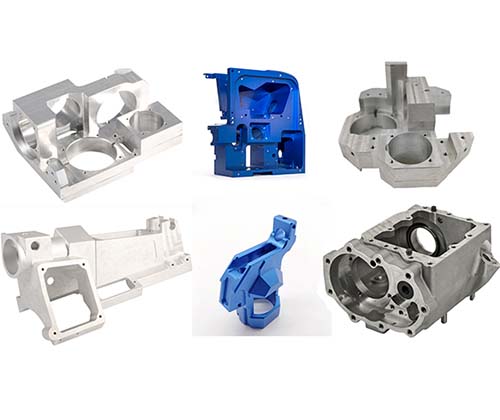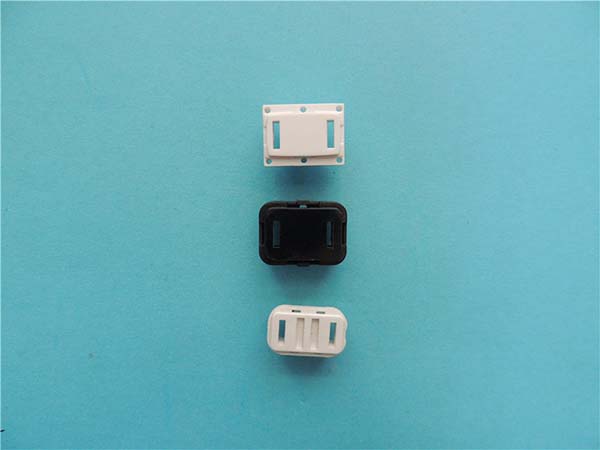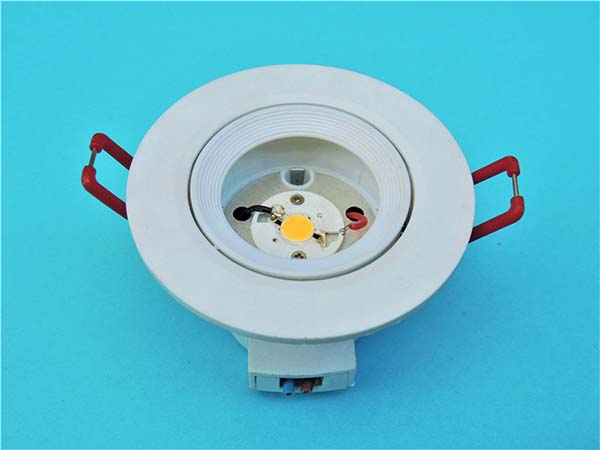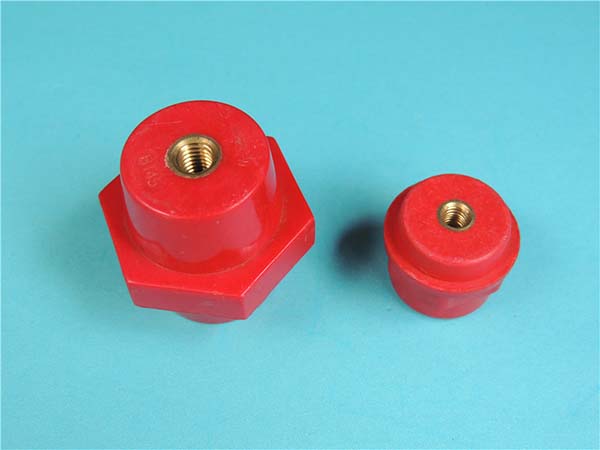1. Introduction: The Rise of Metal 3D Printing in Modern Manufacturing
Metal 3D printing, also known as additive manufacturing, has emerged as a game - changer in modern manufacturing. This revolutionary technology has transformed the way products are designed, prototyped, and produced across various industries, including aerospace, automotive, medical, and jewelry.
1.1 What is Metal 3D Printing?
Metal 3D printing is a process that builds three - dimensional objects layer by layer from metal powder or wire. Instead of subtracting material from a solid block as in traditional machining, 3D printing adds material precisely where it is needed. There are several techniques within metal 3D printing, with Selective Laser Melting (SLM) and Electron Beam Melting (EBM) being two of the most common.
- Selective Laser Melting (SLM): In SLM, a high - power laser is used to selectively melt and fuse metal powder particles together. The laser follows a predefined path based on a 3D model, and each layer is built upon the previous one until the final object is complete. This technique offers high precision and the ability to create complex geometries, making it suitable for applications where tight tolerances are required, such as in aerospace components.
- Electron Beam Melting (EBM): EBM uses an electron beam in a vacuum environment to melt the metal powder. The electron beam provides a high - energy source that can quickly melt the powder, resulting in relatively fast build times. EBM is often used for applications where high - temperature materials are involved, like titanium alloys, and for large - scale components in the aerospace and medical industries.
In conclusion, metal 3D printing is a rapidly evolving technology with a significant impact on modern manufacturing. Finding nearby high - quality services is crucial for businesses and engineers looking to take full advantage of this technology's benefits.
2. Core Technologies Behind Metal 3D Printing Services
2.1 Common Metal 3D Printing Processes
Understanding the technology behind a service provider is essential for matching your project requirements. Here’s a breakdown of leading methods:
| Technology | Working Principle | Materials | Precision | Ideal for |
| Selective Laser Melting (SLM) | Lasers melt metal powder layer-by-layer in a controlled chamber, achieving fine details. | Stainless steel, aluminum, titanium | ±50–100μm | High-precision components (aerospace, medical) |
| Direct Energy Deposition (DED) | A laser or electron beam melts metal powder or wire, depositing material directly onto a substrate for large-scale builds. | Inconel, copper, tool steel | ±200–500μm | Repair of industrial parts, large prototypes |
| Binder Jetting | A binder agent bonds metal powder particles, followed by sintering to form solid parts, ideal for cost-effective mass production. | Iron, stainless steel, bronze | ±200–300μm | Low-cost prototypes, sand molds for casting |
Selective Laser Melting (SLM)
SLM is a powder - bed fusion process. A high - power laser scans across a thin layer of metal powder, melting and fusing the particles according to the cross - sectional shape of the 3D model at that layer. The build platform then lowers by a small increment, usually in the range of 20 - 100μm, and a new layer of powder is spread across the bed. This process is repeated until the entire 3D object is built. The controlled environment, often an inert gas - filled chamber, helps prevent oxidation of the metal powder during the melting process. For example, in the production of aerospace components like turbine blades, SLM can create complex internal cooling channels that are crucial for the efficient operation of the engine. These channels would be extremely difficult, if not impossible, to manufacture using traditional machining methods.
Direct Energy Deposition (DED)
DED, on the other hand, involves the use of a focused energy source, such as a laser or an electron beam, to melt metal powder or wire as it is being deposited onto a substrate. This process is well - suited for large - scale manufacturing and repair applications. For instance, in the oil and gas industry, DED can be used to repair worn - out components like drill bits. The ability to add material directly to the damaged area allows for quick and cost - effective repairs, reducing the need for costly replacements. The deposition rate in DED can be relatively high, with some systems capable of depositing several kilograms of metal per hour, depending on the equipment and materials used.
Binder Jetting
Binder jetting is a different approach. In this process, a liquid binder is selectively deposited onto a bed of metal powder to bond the particles together. The part is then removed from the powder bed in a “green” state, which is a partially solid form. After that, the green part undergoes a sintering process, where it is heated to a high temperature (below the melting point of the metal) in a furnace. This causes the metal particles to bond more strongly, increasing the strength and density of the part. Binder jetting is often chosen for applications where cost - effective mass production is a priority. For Yigu Technology example, in the production of small metal components for the consumer electronics industry, binder jetting can produce parts at a lower cost per unit compared to other metal 3D printing processes.
2.2 Key Technical Capabilities to Evaluate
- Build Volume
The build volume of a 3D printer determines the maximum size of the parts that can be printed. Industrial - grade printers like InssTek’s MX - Fab3 offer up to 800 x 1000 x 700mm build sizes. This large build volume makes it suitable for manufacturing large - scale components, such as those used in the aerospace industry, like wing spars or large engine brackets. These components often require a large amount of material and complex geometries that can be achieved through 3D printing. In contrast, desktop systems may have a much smaller build volume, often capping at 200 x 200 x 200mm. Desktop printers are more suitable for prototyping small - scale components, like jewelry or small mechanical parts for hobbyist projects.
- Multi - Material Support
Services using DED technology have the advantage of being able to print hybrid parts. For Yigu Technology example, in the case of rocket nozzles, InssTek’s case studies have demonstrated the ability to print parts with Inconel 625 outer layers and Al - bronze interiors. The Inconel 625 provides high - temperature resistance and corrosion resistance, while the Al - bronze interior can offer different mechanical properties, such as better thermal conductivity or weight - savings. This multi - material capability allows for the creation of parts that are optimized for specific performance requirements. It is especially valuable in industries like aerospace and defense, where components need to perform under extreme conditions.
- Post - Processing Expertise
Post - processing is a crucial aspect of metal 3D printing. Look for providers that offer a range of post - processing services, including heat treatment, CNC machining, and surface finishing. Heat treatment can improve the mechanical properties of the printed parts, such as hardness, strength, and ductility. For example, in the production of medical implants, heat treatment may be used to enhance the biocompatibility of the metal. CNC machining can be used to achieve tight tolerances and smooth surfaces that may not be possible with 3D printing alone. Surface finishing techniques, such as vapor smoothing for medical implants, can create a smooth and hygienic surface, while shot peening for aerospace parts can improve fatigue resistance by introducing compressive stresses on the surface. A comprehensive post - processing service can add significant value to the 3D - printed parts, ensuring they meet the highest quality standards for their intended applications.
3. How to Evaluate Local Metal 3D Printing Services
3.1 Geographic Proximity vs. Global Networks
When looking for Yigu Technology metal 3D printing services, one of the first considerations is whether to choose a local provider or one from a global network.
- Advantages of Local Services
Local metal 3D printing services offer several distinct advantages, with the most prominent being reduced shipping delays. On average, regional orders can be delivered within 1 - 3 days. This is a significant advantage for businesses that require quick turnaround times, such as those in the prototyping phase or those dealing with urgent production needs. For Yigu Technology example, a local automotive startup might need to quickly iterate on a new engine component design. By using a local 3D printing service, they can have the prototype in hand in a matter of days, allowing them to speed up their development process. Local services also facilitate easier communication and collaboration. Being able to visit the service provider's facility in person, discuss design details face - to - face, and receive immediate feedback can lead to better - quality results.
- Benefits of Global Networks
However, global networks also have their merits. Take TheSteelPrinters, for instance, which has completed over 3500 jobs across various heavy industries. Such global players often have access to a wider range of specialized technologies and expertise. They can handle complex projects that may require unique materials or advanced manufacturing techniques. In the aerospace industry, where components need to meet extremely high standards, a global service provider with a wealth of experience and a wide range of capabilities may be better equipped to produce parts that meet the strict requirements. These global networks can also offer economies of scale, potentially resulting in cost savings for large - scale projects.
- Using Online Platforms for Selection
In today's digital age, online platforms can be a valuable tool for evaluating both local and global metal 3D printing services. These platforms allow you to filter providers by location, making it easy to find local options. Additionally, you can filter by certifications, such as ISO 9001 for quality management. A service provider with ISO 9001 certification has demonstrated that they have a robust quality management system in place, which can give you confidence in the quality of their products and services.
3.2 Material Portfolio and Industry Compliance
- Material Range
The variety of materials offered by a metal 3D printing service is a crucial factor. Top - tier providers typically offer more than 50 different metals, including niche alloys. For example, CMSX - 4 is a nickel - based superalloy that is commonly used in the production of turbine blades for aircraft engines. Its high - temperature strength and excellent creep resistance make it ideal for this application. Another example is C - 103 niobium, which is used in high - temperature aerospace applications. InssTek, in their repair projects, has utilized such specialized materials to demonstrate the versatility of metal 3D printing. A wide material portfolio allows for greater design flexibility. Different industries and applications have specific material requirements, and a service provider that can offer a diverse range of materials is more likely to be able to meet the needs of various clients. For example, in the jewelry industry, precious metals like gold and silver are often used, while in the automotive industry, materials like aluminum and steel are more common.
- Regulatory Adherence
In highly regulated industries such as medical and aerospace, regulatory compliance is non - negotiable. Medical device manufacturers require materials that are FDA - approved. Ti - 6Al - 4V is a commonly used titanium alloy in medical implants, and it must meet FDA standards to ensure its safety and effectiveness in the human body. In the aerospace industry, clients often require NADCAP - certified processes for critical parts. NADCAP (National Aerospace and Defense Contractors Accreditation Program) is a globally recognized program that certifies that a company's processes meet the high standards of the aerospace and defense industries. Non - compliance can lead to serious consequences, including product recalls, legal issues, and damage to a company's reputation. Therefore, it is essential to ensure that the metal 3D printing service you choose adheres to all relevant regulations and standards for your industry.
3.3 Quality Control and Testing Protocols
A reputable metal 3D printing service provider will have strict quality control and testing protocols in place:
- Dimensional Accuracy
Dimensional accuracy is crucial, especially for applications where tight tolerances are required. Many providers use laser scanning to ensure that parts meet ±0.1% of the design specifications. This is particularly important in the production of medical prosthetics using SLM technology. For example, a hip implant needs to fit precisely into the patient's anatomy. Any deviation from the design specifications could lead to discomfort, improper function, or even the need for revision surgery. Laser scanning technology allows for highly accurate measurements of the printed parts, ensuring that they meet the required dimensional tolerances.
- Mechanical Testing
Mechanical testing is another essential aspect of quality control. Tensile strength tests are commonly performed to verify the strength of the printed parts. For 316L stainless steel parts, a tensile strength of around 850 MPa is expected, which should match that of forged equivalents. This ensures that the 3D - printed parts can withstand the mechanical stresses they will encounter in their intended applications. In the automotive industry, for example, components like engine brackets need to be strong enough to support the engine and withstand the vibrations and forces generated during operation.
5. Cost vs. Quality: Making Informed Decisions
5.1 Pricing Factors to Consider
Cost is a significant factor when choosing a metal 3D printing service, but it should not be the sole determinant. Understanding the factors that influence pricing can help you make a more informed decision. Yigu Technology are some key cost drivers in metal 3D printing:
| Cost Driver | Impact on Price | Example (Stainless Steel Part, 100cm³) |
| Material Type | Exotic alloys (titanium) cost 3x more than stainless steel. | \(150 (titanium) vs. \)50 (316L) |
| Geometric Complexity | Parts with internal channels or thin walls require more support structures, increasing material use by 20–30%. | \(80 (simple geometry) vs. \)120 (complex) |
| Post - Processing | Heat treatment and surface finishing can add 50–100% to base printing costs. | \(50 (raw) vs. \)100 (finished) |
In conclusion, when evaluating the cost of metal 3D printing services, it's essential to look beyond the base printing cost. Consider all the factors that contribute to the final price, including material type, geometric complexity, post - processing, and potential hidden costs. By doing so, you can make a more informed decision that balances cost and quality.
6. Conclusion
Finding top - quality metal 3D printing services nearby requires balancing technical expertise, material capabilities, and logistical efficiency. By prioritizing providers with proven industry experience (e.g., TheSteelPrinters’ 1500+ optimized designs) and transparent quality protocols, you can transform concepts into high - performance metal parts with confidence. Whether prototyping a medical implant or producing industrial spare parts, the right local partner will streamline your workflow, enhance part performance, and drive innovation.
When evaluating metal 3D printing services, it's crucial to consider multiple factors. First, understanding the core technologies, such as SLM, DED, and binder jetting, helps in choosing a service that aligns with your project's complexity and precision requirements. The build volume, multi - material support, and post - processing expertise of the service provider are also essential technical capabilities to assess.
Geographic proximity offers benefits like reduced shipping times and easier communication, but global networks can bring in specialized knowledge and economies of scale. A wide material portfolio, especially one that includes niche alloys and materials compliant with industry regulations, is a must - have. Stringent quality control and testing protocols, covering dimensional accuracy, mechanical testing, and non - destructive testing, ensure the reliability of the 3D - printed parts.
Cost is a significant consideration, but it should not overshadow quality. By understanding the pricing factors, including material type, geometric complexity, and post - processing, as well as being aware of potential hidden costs like design optimization fees and minimum order quantities, you can make a cost - effective decision.
In Yigu Technology summary, the right metal 3D printing service is out there, waiting to help you turn your ideas into reality. With careful evaluation and consideration of the factors discussed in this article, you'll be well - on your way to finding a service that meets your needs and exceeds your expectations.
FAQs
1. What's the difference between SLM and DED in metal 3D printing?
SLM (Selective Laser Melting) uses a laser to melt metal powder layer - by - layer in a controlled chamber, achieving high precision with a tolerance of ±50–100μm, ideal for high - precision components like those in aerospace and medical fields. DED (Direct Energy Deposition), on the other hand, uses a laser or electron beam to melt metal powder or wire directly onto a substrate. It has a lower precision of ±200–500μm but is suitable for large - scale builds and repair of industrial parts.
2. How can I reduce the cost of metal 3D printing?
You can reduce costs by choosing more common materials like stainless steel instead of exotic alloys. Optimizing the design to reduce geometric complexity can also lower material usage and the need for support structures. Additionally, look for service providers that include design optimization in their service and have lower minimum order quantities, especially if you only need a few parts.
3. Are there any limitations to the materials used in metal 3D printing?
While a wide range of metals can be used in 3D printing, not all alloys are equally suitable for every 3D printing process. Some materials may be difficult to process due to their high melting points or reactivity. Also, in regulated industries like medical and aerospace, only materials that meet specific regulatory standards can be used. For example, in medical implants, materials must be biocompatible and often require FDA approval.q
